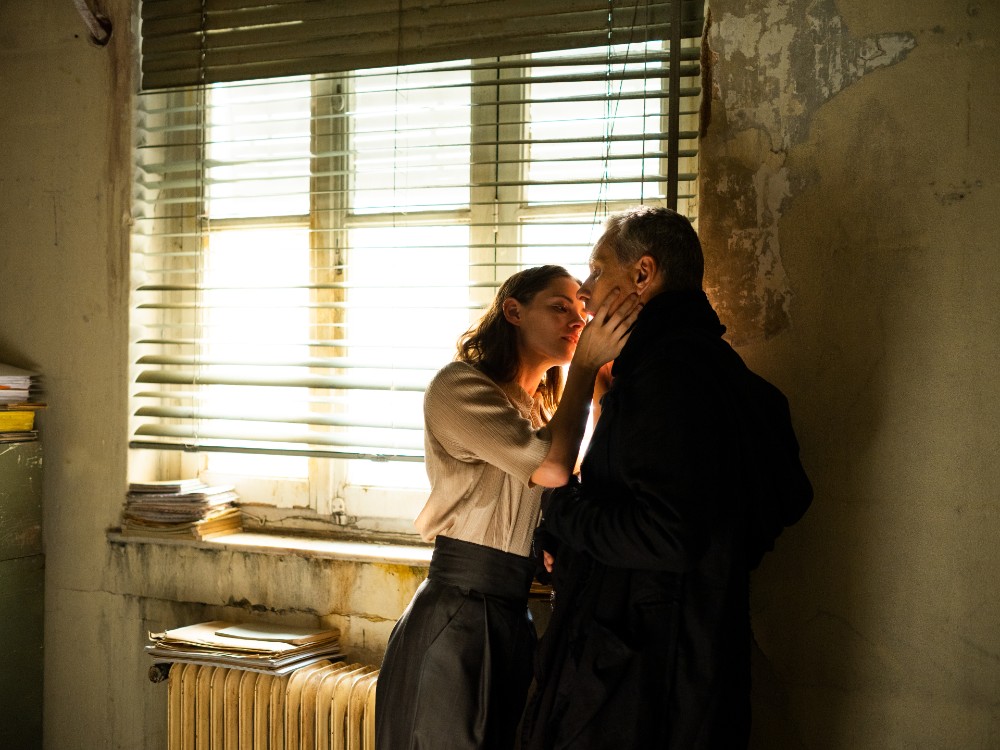
For over four decades, director David Cronenberg has been considered one of the bonafide masters of horror. With his latest movie, Crimes of the Future, he returns to the body horror genre he helped create to offer his unique take on the genetic evolution of both humanity and art.
Crimes of the Future stars Viggo Mortensen as performance artist Saul Tenser, while Léa Seydoux (Die Another Day) plays Caprice, his partner in both senses of the word. The film takes place in a futuristic world where pain no longer exists and infection is an afterthought. Because of that, elective surgery has become something that can be performed in the street, or in the case of Saul and Caprice, in front of their admiring fans, who enjoy Saul’s ability to create new, alien organs and Caprice’s surgical skill in removing them. Co-starring Kristen Stewart, Scott Speedman, and Don McKellar, the movie explores the thin line that divides art, sex, and surgery. In other words, Crimes is definitely a David Cronenberg movie.
Production Designer Carol Spier was responsible for helping Cronenberg to realize this vision of the future, and it helped that they’ve developed a short-hand over the years, as she’s been working with the Canadian filmmaker going all the way back to Fast Company, which pre-dates his horror movie days. Spier served as the art director on Cronenberg’s early films, such as The Brood, Scanners, and Videodrome, and she has served as the production designer on all but two of the director’s movies since then.
The visual look of Crimes of the Future is certainly one to admire, and Spier was intimately involved in every aspect of the film’s design, including the creation of its many medical and surgical contraptions. Below the Line spoke with Spier by phone for the following interview, during which she discussed her long history with Cronenberg and why she remains one of his closest collaborators.

Below the Line: You’ve obviously been working with David for four decades, which is just an amazing collaboration. How did you start working with him or even get into production design in the first place?
Carol Spier: I studied architecture and interior design, and then I was working in an architect’s office when I graduated, and then I started doing theater on the side, and I said, ‘This is more fun.’ Then, I was actually in Central Canada at the time, in Winnipeg, and a film came into Winnipeg to shoot. I got onto that film, doing props and set dressing and art direction and a little bit of everything. Everybody working on that film convinced me that I needed to switch careers and work in the film business, and so I packed up and moved to Toronto because there wasn’t much of a film business in Winnipeg at the time. In fact, there wasn’t that much in Toronto at the time, either.
BTL: David was quite pivotal in getting the Toronto film business going, too.
Spier: Oh, definitely.
BTL: I know that Crimes of the Future is something he wrote 20 years ago, so did you know about it that long ago? Was it something you had read or started thinking about to prep?
Spier: No, no, no. He sent me the script when he first wrote it. He said, ‘I’m thinking about doing this, what do you think?’ Sometimes, he would send me scripts before we even knew whether it was gonna shoot or not. I read the script, and I kept it, so when he called me about Crimes of the Future, I actually still had the old script, and I pulled it out and looked at it at the time. The only thing that was different about it was the title on the cover. But as we got into it, of course, things had to change. We had to rewrite things according to locations that we found and sets that we found. Some of the things in the original script were a little bit dated, obviously, technical things, and they had to be changed. But other than that, the script is pretty much the same.
BTL: He also made another movie called Crimes of the Future very early in his career.
Spier: Oh, the original Crimes of the Future? I was still in university at the time. In fact, that’s when I saw it. I was in university and the architecture faculty played it one night, and the faculty and I went to see it, and I thought, ‘That’s cool.’ That was even before I was thinking about going into film.
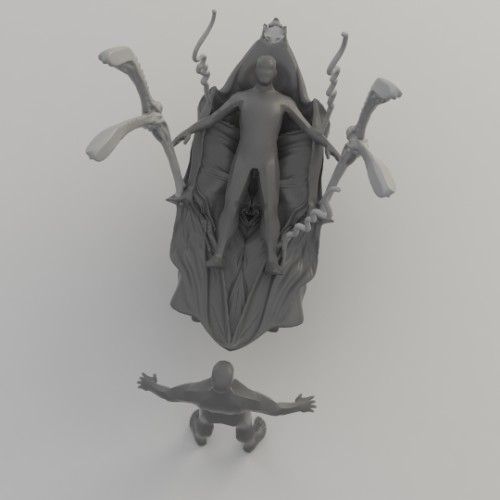
BTL: When did this script come up again? We’ve obviously been in a pandemic the last few years that has messed with production a bit.
Spier: It would have been, not last year, the year before that we started hunting for locations. We started looking for locations in Canada. Most of the places that we would send scouts out to, David and I would look at the locations, and go, ‘Nope, not quite.’ We’d see one or two locations that would maybe work. It was just getting to the point where if we wanted to have the look that we wanted, we were going to have to start building everything, and of course, the budget would never cover everything. We were thinking, ‘Well, maybe we can’t do it.’ David was getting a little discouraged, and then [Producer] Robert [Lantos] said, ‘What about Athens?’ They’ve got a film [tax credit] now there, and he had shot there before. We sent scouts out there, and we started to see locations that we loved. Also, the tax incentive was really good at the time. It gave the film a look that we would never have had if we’d shot it in North America. We’re just not old enough.
BTL: You think of Athens and you automatically think of historical movies and those locations, but this movie has a very specific look that doesn’t necessarily look like the Athens in many of our minds. Maybe some Greek filmmakers have shot in these places.
Spier: We didn’t shoot the Acropolis or anything, exactly. We weren’t specifically saying it was in Athens. If people wanted to recognize it, that was fine, but we weren’t saying, ‘Okay, here we are in Athens today.’ It wasn’t a travelogue or anything. This is just someplace in the future.
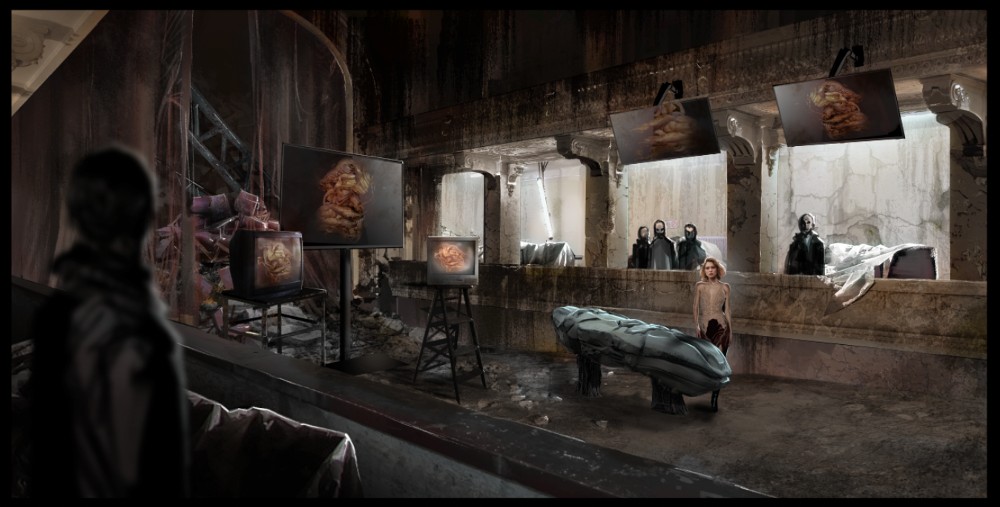
BTL: I couldn’t remember if it ever mentioned it was supposed to be Greece or not.
Spier: No, there might have been a little Greek in the graffiti on the walls — we couldn’t change that. There was also a lot of English in the graffiti on the walls, too, and one of the funny things was that everywhere that we drove, all through Athens, there was a graffiti artist named “Tenser.” And you’d see big huge “Tenser” graffiti everywhere. It was a sign, I guess, that was where we were supposed to be shooting,
BTL: I’m surprised you didn’t get the artist to do a cameo, but I’m sure graffiti is illegal there. This is science fiction, but it could only have come from the mind of David Cronenberg, so what kind of research did you have to do in terms of creating the different contraptions and locations to make this world seem so different from our own?
Spier: It wasn’t the same kind of research you do for a film. The research I did was mainly looking at aged, falling-apart decrepit buildings. I looked at photographs of Chernobyl, what it looked like when it had been decimated, and everybody had left, and looked at American ruins, buildings in Detroit that are falling apart. The building in Havana, just for the aging, so I did a lot of research of buildings that were aging and falling apart. I started that before we even knew we were going to happen, so to get to Athens and then find buildings that had been there for so long, and buildings that had been abandoned, and it was just too expensive to take them down, so they just left them standing. Buildings deteriorate over time, and it was the kind of deterioration that we were looking for, and that we really wanted. Going to Athens was the best thing that we could have done for the film.
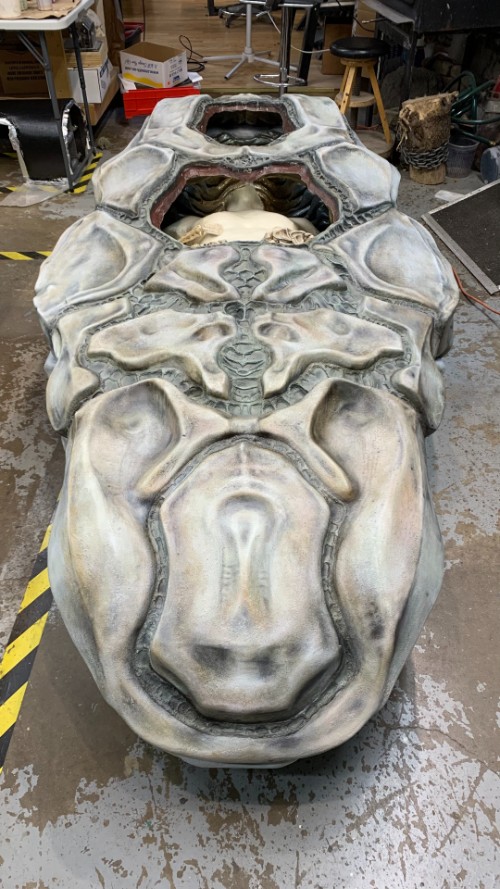
BTL: You mentioned the budget that was required to build certain things…?
Spier: We built all of Tensor’s living quarters, so all the spaces that he was living in — the SARC room, his bedroom, the lab area, his eating area, and the living space. I wanted it to look like he had to live in a highly-protected and secluded area, because he was ill, and the environment was affecting him. I thought, ‘Well, he should be underground.”‘ And then, I was inspired by a lot of underground places, and that was also inspired by some of the buildings in Santorini, Greece, which are cave dwellings. I’ve actually stayed in one of those cave dwellings, and I wanted that kind of feel where the walls were all amorphous, not a straight line anywhere. That’s kind of what we used as our basis when we were concept drawing for his living space. We also built the motel room at the beginning where the little boy eats the wastepaper basket.
BTL: There also seemed to be a few visual references to some of David’s earlier films, like The Fly and Dead Ringers, and I’m not sure how many of those were deliberate. Does David draw a lot of his ideas down for you to embellish?
Spier: No, he doesn’t, not at all. Not like Guillermo del Toro. Dave doesn’t draw, but it’s all in his mind. I think it’s just a sensibility that flows through all his films. Dead Ringers, other than the instruments and a few things where the twins are conjoined, it was a little different. It was stark, it was modern, [and] it wasn’t as organic as a lot of his other films. And also, Eastern Promises, and even A History of Violence, those were diverging from the body horror, except for little references.
BTL: It definitely goes back to the period around eXistenZ, which was over 20 years ago now, so this could have been a follow-up in some ways. How are you involved with designing some of the surgical contraptions? Are you working together with the props department to make those happen?
Spier: What I like to do is I usually work with an illustrator or a concept illustrator, and I give them basic ideas and basic sketches, and then they take it and then they develop it. If it’s a prosthetic prop, we usually just do a lot of research and find images. For this one, we did one very simple concept drawing of what Breckin’s organs would look like, and that was just as a starting jump-off point [that] we gave to the prosthetic people, and then they took it from there
BTL: Do you use computers in the design process as far as figuring out what needs to be built on location or on a set?
Spier: Yes, of course. Not when we first started, and I’m probably not as computer-literate as a lot of production designers are, because I’m not that age. But we definitely use computers for illustrations now. I also like to work with hand drawings. I still think that the hand drawings can have a little more soul.
BTL: And how do visual effects play a part in what you’re creating, especially when it comes to the backgrounds and environments?
Spier: The only thing in the sets that were visual effects was outside the windows because obviously, we were in a studio, so when we had windows, we had a green screen out there and visual effects would put in the Greek countryside, so set-wise, not much. The main visual effects — other than tidying things up, which you normally do — were with the SARC and the operation of the arms. We had puppeteers working… or, of course, getting rid of puppeteers, because they were obviously on the set… we had puppeteers working to start it off, but to carry it further, all the operations, that was all with visual effects, taking our puppeteered arms and making them work. They did the things that we couldn’t do, mainly because we just didn’t have the time on the set. Originally, it would have been nice if we could have done more on set. I thought that [special] effects actually work quite well, but sometimes they don’t, and you pick it up, and you can see where visual effects take over. It would have been nice to do more, but we just didn’t have the time to shoot on set, because that takes a lot of time when you’re puppeteering and doing all that special effects in-camera.
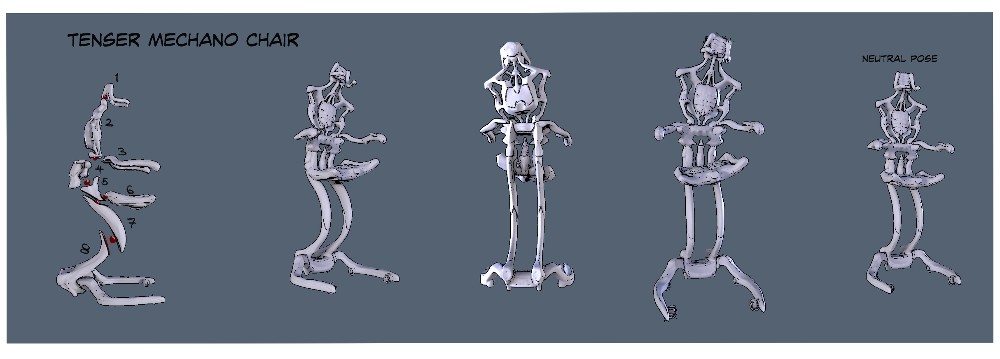
BTL: This might end up being a longer answer to a relatively simple question, but how has your working relationship with David changed over your 40 years working together? He used to make a movie a year, but that’s slowed down as he’s taken time off. When he has a new project, do you immediately jump back into the saddle? I know you’ve worked on all his movies except for a couple…
Spier: Yeah, there were two. I was working on other films at the time, actually with Guillermo del Toro, so I did miss Spider and Cosmopolis, and the two that he did when he first started because I hadn’t even met him then. He didn’t even have a production designer on those two. He had a set decorator, and that was it. When I arrived to do Fast Company, I think that was the first time that he’d had a production designer on his films [and that was] the first time that he sat down with an art department. I got him to discuss character, who the characters were and what they were, and where did they come from, and their whole background story so that we could develop where they lived, to make it look real. Characters are a big part of what I like to base the beginnings of my designs on. You have to know who these people are and make sure that they’re in the right kind of setting. That’s continued on from the beginning. We’ve always done that. We start off with a character study of who are all these people, and why are they there, and what are they doing? And then, what do they have to do on these sets and how are they going to move? With David, you never know until he gets on the set with his actors, how he’s going to shoot it. So you pretty much have to give them everything and four walls of a set. There’s no way you could build a two-walled set with David.
BTL: With that in mind, do you interact with the actors during preproduction? Do you sit down with them to discuss what they need for their characters?
Spier: Depends on the actor. Some actors like to get more involved. Others don’t. They just say, ‘Okay, just give it to me.’ Some actors, especially in terms of their props, they’re very concerned about what their props are. I like to work closely with the propmasters because it just keeps that overall feel and look to the film and you don’t have anything that looks out of place. An actor like Viggo, who I’ve worked with several times now, he’s very involved, and you get very involved with him at the beginning. In fact, when we were doing A History of Violence, he had gone away for the weekend to upstate New York, and I got a call on a Monday morning. He was on his way back and called me and said, ‘Can you meet me in my trailer in about an hour?’ He’d gone shopping while he was in upstate New York and bought a whole bunch of things that he thought they might work on the set, because they’re American, and they looked like they should be in a diner. He said, ‘You can use them if you want or you don’t have to.’ He did the same thing when we were doing Eastern Promises. He came back from Russia with a suitcase full of things. So now I work with him as a director, and he’s very involved in every stage of the film. I’ve never seen an actor get as involved as he does, [though] Ian Holm was also very involved on the set when we were doing eXistenZ. There [have] been other actors where I’ve talked to them, and they said, ‘No,’ or they’ve asked me to do something which didn’t really work, and I just sort of ignored it. It depends on the actor; they’re all different.
Crimes of the Future is now playing in select theaters.





